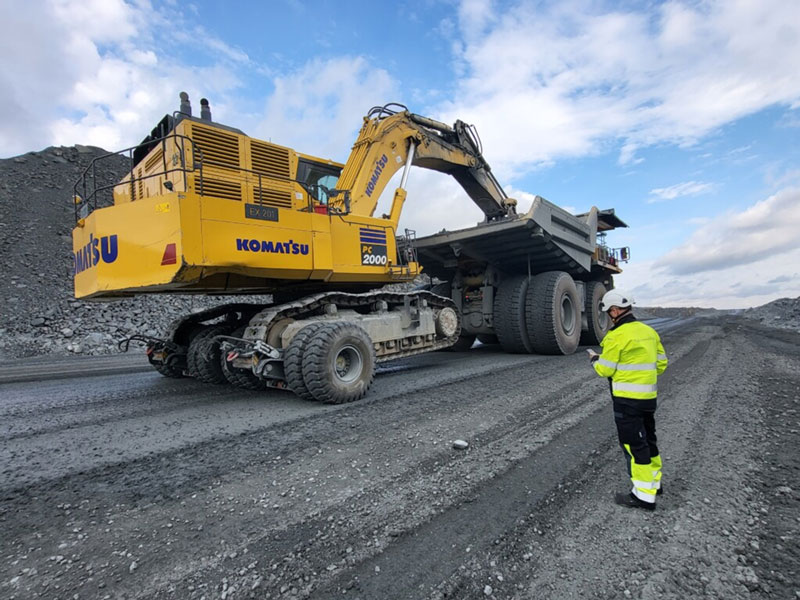
According to a study by the Finnish Institute of Occupational Health, the exposure of drivers to whole-body vibration and the resulting health risks when moving excavators can be significantly reduced by using Sleipner dollies instead of driving on the excavator’s own tracks.
The vibration measurements were conducted at a Finnish mine at the end of May 2023.
The aim of the measurements was to measure the level of the workers’ exposure to whole-body vibration when driving an excavator from one site to another at the mine. Vibration measurements were taken when driving an excavator from one site to another on tracks and when using the E190 Sleipner E Series dollies. The excavator used for the test was a Komatsu PC 2000 and, when using dollies, the excavator was pulled with a Komatsu 830 E haul truck. During the measurements – 26 minutes on dollies and 20 minutes on tracks – the driver and the person conducting the measurements were in the excavator cab.
“According to our research results, using dollies significantly reduces the workers’ exposure to whole-body vibration and the resulting health risk, emerging as an excellent way to mitigate vibration. Reducing vibration also improves work comfort, as does a lower sensory noise level in the excavator cab,” said Ville Hyvärinen, specialised occupational hygienist, Oulu office, Finnish Institute of Occupational Health, who conducted the measurements and prepared the report.
The values obtained from the vibration tests for the excavator are also comparable, for example, when driving a bulldozer and drill on tracks. When moving the bulldozer and drill, whole-body vibration can be effectively reduced by using Sleipner’s DB Series lowboy trailers.
The measurements were carried out on the transport route of the mine’s open pit area. The testing route was kept the same during both tests. The surface was a gravel road, and its good condition had been ensured with a road grader. During the measurements, the weather was clear.
Limit values not exceeded using dollies
The action value for daily whole-body vibration is 0.5 m/s2 and the limit value is 1.15 m/s2. If the daily exposure of workers exceeds the action value, the employer must draw up and implement a vibration prevention program and regularly monitor the health of workers. If the exposure also exceeds the limit value, measures to reduce exposure must be carried out immediately.
When using Sleipner dollies, neither the action value nor the limit value are exceeded during a normal 12-hour working day. When driving on tracks, the action value level is exceeded after just three hours of exposure.
